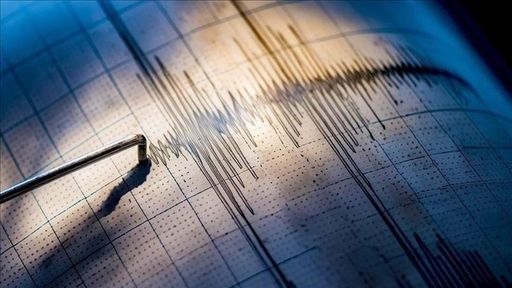Several countries across the Pacific remain on edge after a massive earthquake struck the Russian Far East, triggering widespread evacuations from the US’ Hawaii to Japan.
While tsunami warnings have since been downgraded, anxiety remains high across coastal regions as people living near the coast were asked to seek shelter in higher grounds.
Airports have been shut, and office workers in seaside cities have rushed to higher floors amid the initial threat of incoming waves.
Japan's weather agency downgraded tsunami alerts on Wednesday afternoon but maintained warnings for its northern areas. Alerts for regions from eastern Ibaraki down to southern Wakayama have been reduced to advisories, according to the agency’s website.
The magnitude 8.8 quake struck off Petropavlovsk on Russia's remote Kamchatka peninsula, and was the largest since 2011 when a magnitude 9.1 quake off Japan and a subsequent tsunami killed more than 15,000 people.
The quake, which struck at 8:24 am (2304 GMT Tuesday), was one of the 10 biggest recorded, according to the US Geological Survey.
China also lifted the tsunami warning from some coastal areas, according to state-run media.
The Natural Resources Ministry had issued a yellow tsunami alert as high waves were expected to reach coastal areas of Shanghai with a predicted maximum wave height of 30 centimeters (nearly 1 foot).
However, later the ministry lifted the alerts for the eastern Zhejiang and Shanghai regions while maintaining a yellow tsunami warning for the east coast of Taiwan.
Separately, Chinese authorities also evacuated 283,000 people in Shanghai and moved them to 1,900 shelters due to the threat posed by Typhoon Co-May.
Russian authorities said a tsunami hit and flooded the port town of Severo-Kurilsk, while local media said a wave between three and four metres high was recorded in the Elizovsky district of Kamchatka.
A video posted on Russian social media appeared to show buildings in the town submerged in seawater. Authorities said the population of around 2,000 people was evacuated.
Several people were injured in Russia by the quake, state media reported, but none of them seriously.
"The walls were shaking," an Elizovsky resident told state media Zvezda.
"It's good that we packed a suitcase, there was one with water and clothes near the door. We quickly grabbed it and ran out... It was very scary," she said.
Millions advised to evacuate
Authorities in Russia's far-eastern Sakhalin region declared a state of emergency in the northern Kuril Islands.
The mayor there said that "everyone" was evacuated to safety.
Officials from countries with a Pacific coastline in North and South America — including the United States, Mexico and Ecuador — issued warnings to avoid affected beaches.
In Hawaii, Honolulu Mayor Rick Blangiardi said residents and the thousands of visitors should get to safety on upper floors of buildings or higher ground.
"People should not, and I will say it one more time, should not, as we have seen in the past, stay around the shoreline or risk their lives just to see what a tsunami looks like," governor Josh Green said.
"It is not a regular wave. It will actually kill you if you get hit by a tsunami," Green said.
Warnings across the Pacific
At least six aftershocks have further rattled the region, including one of 6.9 magnitude and another listed at 6.3.
The US Tsunami Warning Centers said waves exceeding three metres above the tide level were possible along some coasts of Ecuador, northwestern Hawaiian islands and Russia.
Between one- and three-metre waves were possible along some coasts of Chile, Costa Rica, French Polynesia, Guam, Hawaii, Japan and other islands and island groups in the Pacific, it said. Waves of up to one metre were possible elsewhere, including Australia, Colombia, Mexico, New Zealand, Tonga and Taiwan.
It described the potential conditions as "hazardous".
Television footage showed several whales washed up on a beach.
Workers at the stricken Fukushima nuclear plant in northeast Japan — destroyed by a huge quake and tsunami in 2011 — were evacuated, its operator said.
Taiwan also issued a tsunami watch, and the Central Weather Administration warned that tsunami waves could reach Taiwan's coast by 1.18 p.m. (0518 GMT).
The Philippines also warned its residents in the coastal areas fronting the Pacific Ocean of a "tsunami wave height of less than 1 metre" following the powerful earthquake.
Aftershocks
Tsunami alerts were pushed to mobile phones in California, according to local AFP reporters.
"STAY STRONG AND STAY SAFE!" US President Donald Trump said on social media.
Tsunami sirens blared near Hawaii's popular Waikiki surf beach where an AFP photographer observed gridlocked traffic as Hawaiians escaped to higher ground.
The US Tsunami Warning Centers issued a Tsunami Warning -- its highest level alert -- for the entire US state of Hawaii, with the first waves expected at 7:17 pm local time (0517 GMT).
"People are also advised to stay away from the beach and not to go to the coast," the seismology centre said in a warning.
Vessels were ordered to head to open water ahead of the expected arrival of waves up to 2 metres.
















